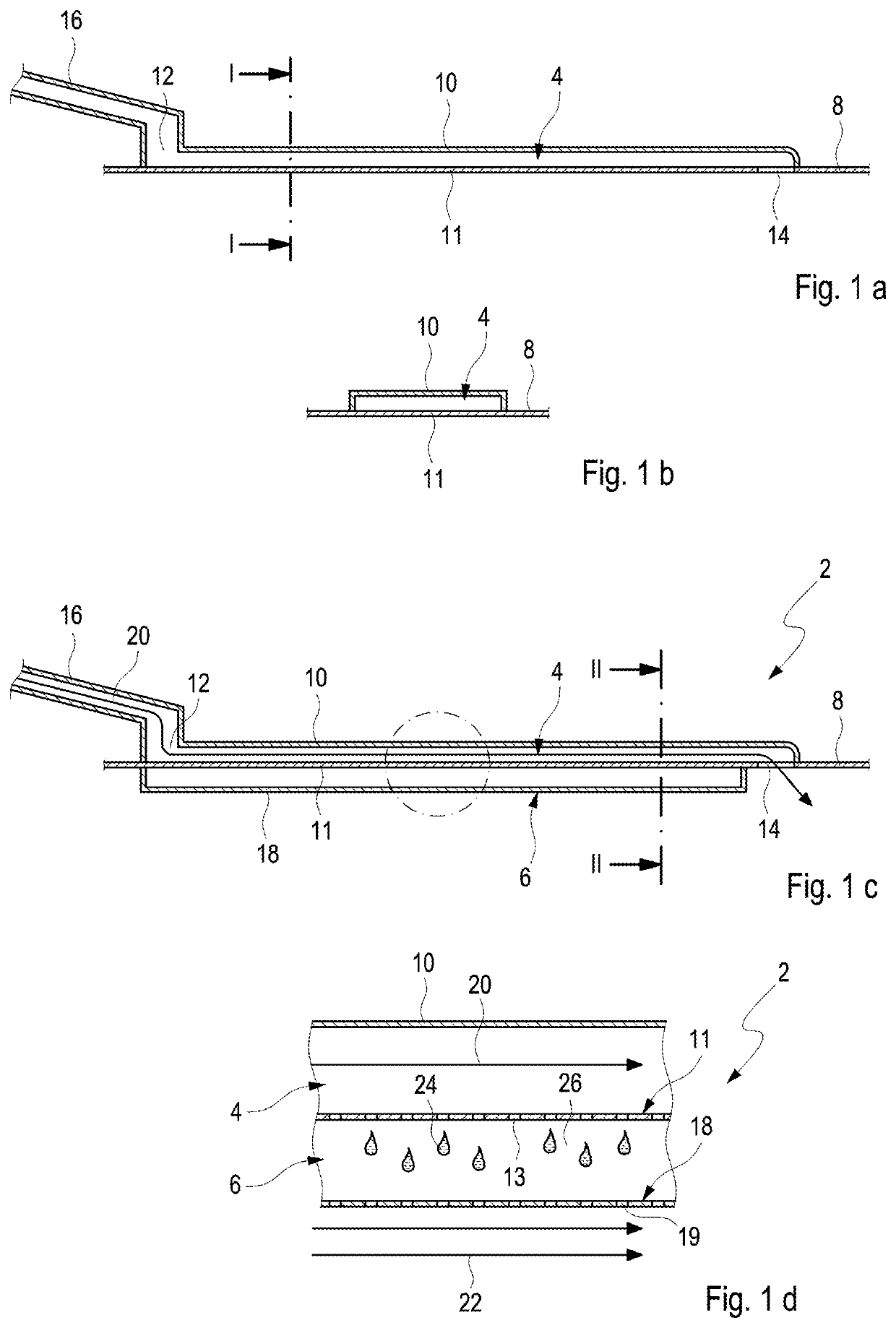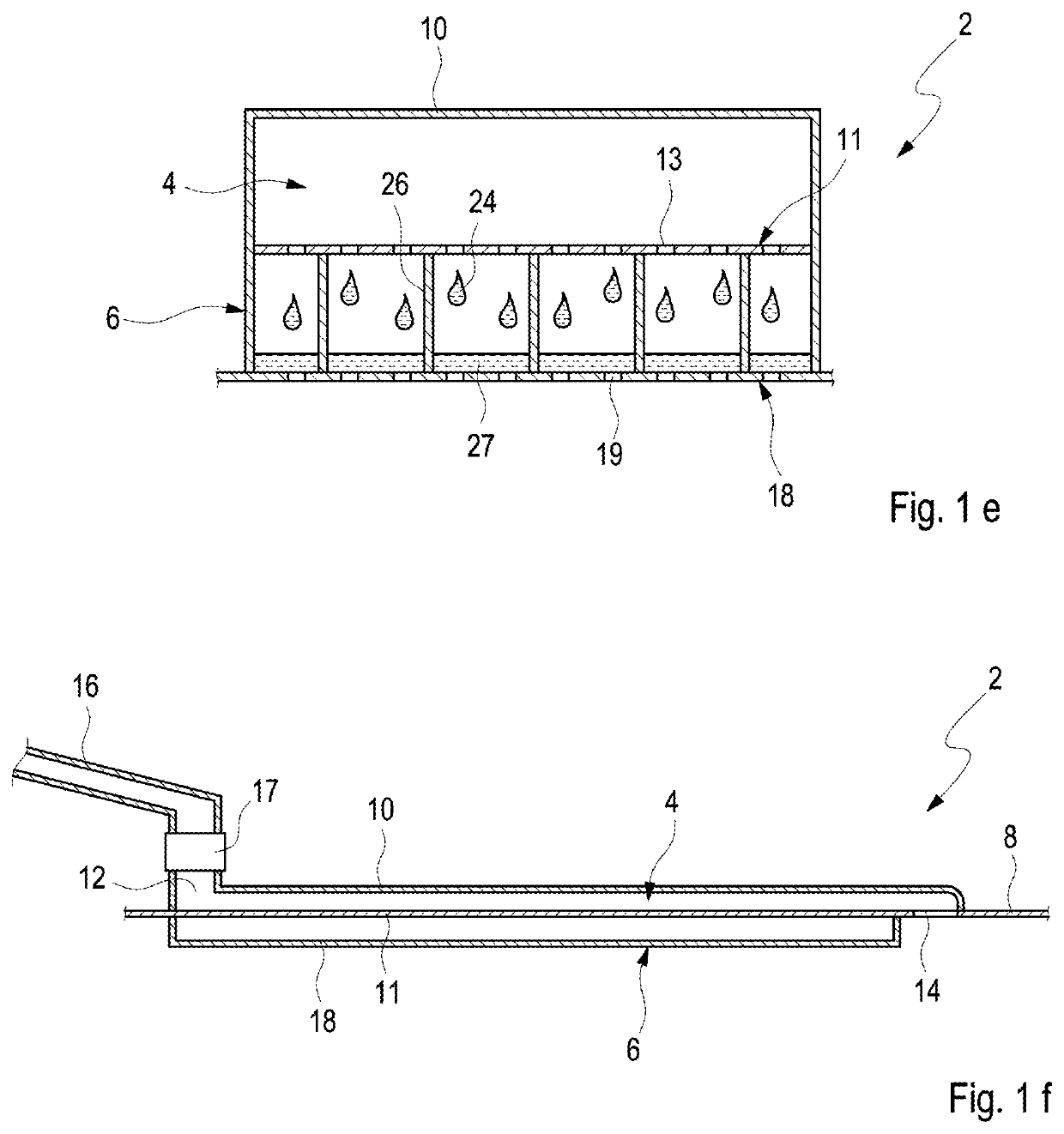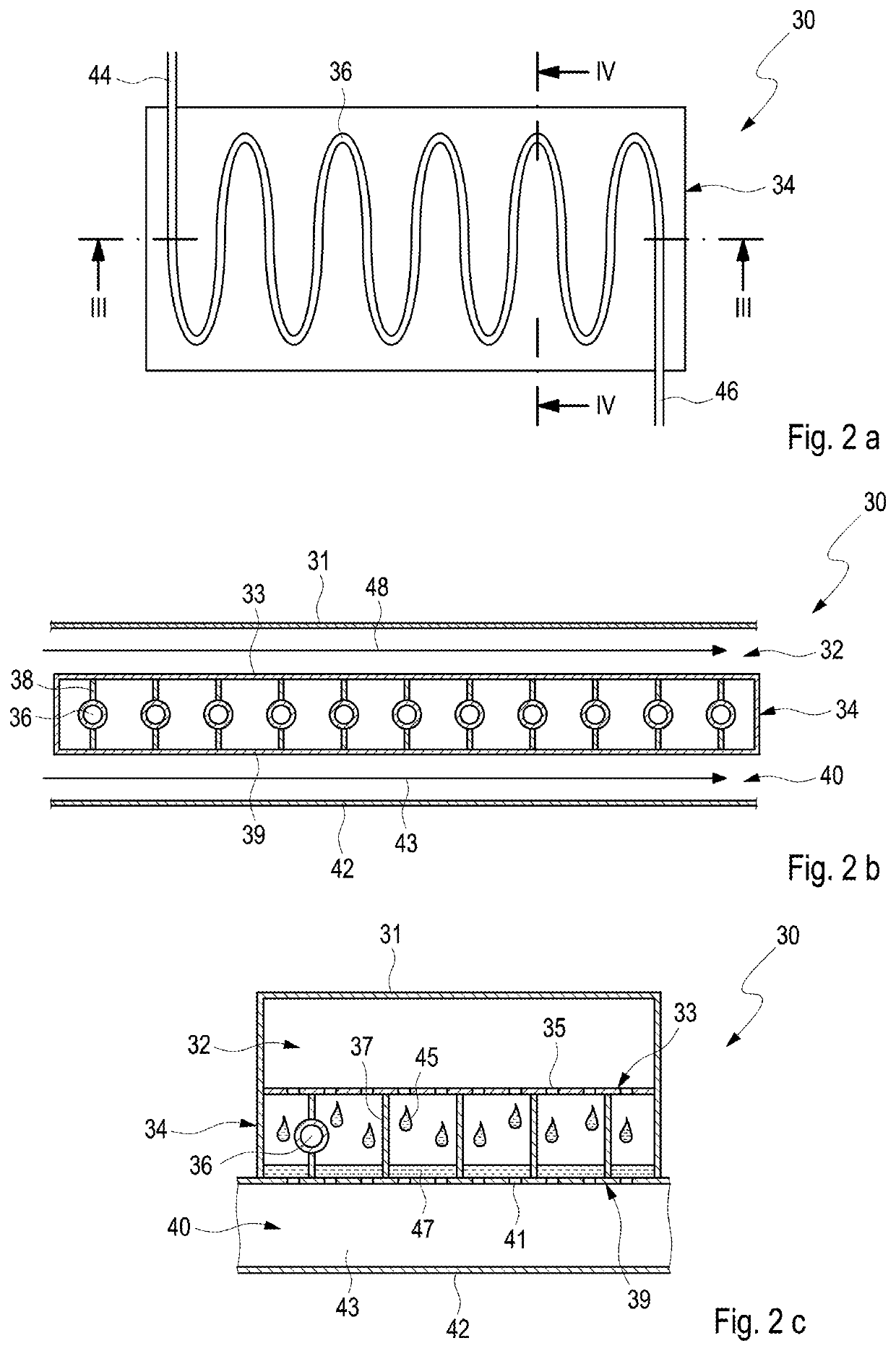System for the treatment of water
a technology for treating systems and water, applied in the direction of battery/cell propulsion, vehicle cleaning, electrochemical generators, etc., can solve the problems of increased installation space, increased cost, and increased weight, and achieve the effect of reducing the emission of water or water vapor from the system, saving costs and weight, and positive effect on its operation
- Summary
- Abstract
- Description
- Claims
- Application Information
AI Technical Summary
Benefits of technology
Problems solved by technology
Method used
Image
Examples
first embodiment
[0036]the system 2 according to the disclosure is shown in full in FIG. 1c. FIG. 1d shows a first detail of the system 2 marked in FIG. 1c by a dashed circle. FIG. 1e shows a second detail from FIG. 1c along a section line II-II. This system 2 comprises a cavity 4 and a condenser 6. The cavity 4 is shown without the condenser 6 in FIG. 1a. FIG. 1b shows the cavity 4 in sectional view along a line I-I from FIG. 1a. As FIG. 1c shows, the condenser 6 is arranged between the vehicle outer wall 8 and a system outer wall 18, which simultaneously bounds the underbody of the vehicle. Figure if shows the complete system 2 from a second perspective.
[0037]Here, it is provided that the cavity 4 is arranged on an underbody-side vehicle outer wall 8 of the vehicle and is bounded by a first cavity outer wall 10 and a second cavity outer wall 11, which is designed as part of the underbody-side vehicle outer wall 8. The second cavity outer wall 11 has pores 13 which are discernible in FIG. 1e.
[0038...
second embodiment
[0042]FIG. 2a shows a condenser 34 of the system 30 from above, wherein it can be seen here that a cooling duct 36 is connected via two connections 44, 46 to a loop of a thermal management system. FIG. 2b shows a detail of the system 30 along a section line from FIG. 2a. FIG. 2c shows the system 30 along a section line IV-IV from FIG. 2a.
[0043]The second embodiment of the system 30 for a vehicle is shown schematically in FIG. 2b. This system 30 also comprises a cavity 32, the condenser 34 with cooling ducts 36 and cooling ribs 38 and an air duct 40, wherein the condenser 34 is arranged between the cavity 32 and the air duct 40, wherein the system 30 is bounded here by an underbody-side system outer wall 42, which simultaneously forms an underride protection plate of an underbody of the vehicle. The cavity 32 is bounded by a first cavity outer wall 31 and a second cavity outer wall 33, which is simultaneously formed as first condenser outer wall of the condenser 34 and has pores 35....
PUM
| Property | Measurement | Unit |
|---|---|---|
| temperature | aaaaa | aaaaa |
| weight | aaaaa | aaaaa |
| pressure | aaaaa | aaaaa |
Abstract
Description
Claims
Application Information
 Login to View More
Login to View More - R&D
- Intellectual Property
- Life Sciences
- Materials
- Tech Scout
- Unparalleled Data Quality
- Higher Quality Content
- 60% Fewer Hallucinations
Browse by: Latest US Patents, China's latest patents, Technical Efficacy Thesaurus, Application Domain, Technology Topic, Popular Technical Reports.
© 2025 PatSnap. All rights reserved.Legal|Privacy policy|Modern Slavery Act Transparency Statement|Sitemap|About US| Contact US: help@patsnap.com



